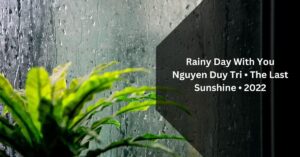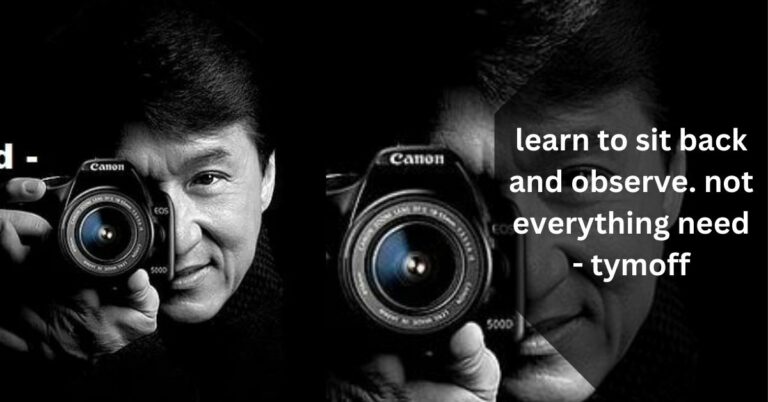In the realm of contemporary literature, Nguyen Duy Tri’s “The Last Sunshine” has emerged as a significant piece, captivating readers with its unique narrative and compelling themes.
Released in 2022, this work showcases the author’s prowess in storytelling and offers readers a thought-provoking journey through its pages.
Background on Nguyen Duy Tri:
Before delving into the specifics of “The Last Sunshine,” it’s essential to understand the background of the author, Nguyen Duy Tri.
Known for his distinct voice and storytelling prowess, Tri has carved a niche for himself in the literary world.
His previous works have garnered acclaim, and “The Last Sunshine” stands as a testament to his evolution as a writer.
Synopsis of “The Last Sunshine”:
While avoiding spoilers, it’s crucial to provide readers with a brief overview of the plot and central themes explored in “The Last Sunshine.”
Tri’s narrative might revolve around various elements such as love, loss, resilience, or societal commentary. The characters and their development within the story are likely to be integral to the overall impact of the novel.
Exploring Themes:

Nguyen Duy Tri is known for infusing his works with profound themes that resonate with readers on a personal and societal level.
“The Last Sunshine” is expected to continue this trend, addressing issues that may mirror contemporary challenges or delve into timeless human experiences.
Themes such as identity, the human condition, or cultural nuances could be explored in-depth within the novel.
Literary Style and Impact:
Tri’s writing style has often been praised for its eloquence, symbolism, and ability to evoke emotions. In “The Last Sunshine,” readers can expect a literary journey that not only engages the mind but also touches the heart.
The impact of the novel on its readership, as well as its potential contributions to contemporary literature, will undoubtedly be subjects of discussion among literary enthusiasts.
Reception and Reviews:
As with any notable literary work, the reception of “The Last Sunshine” is likely to be a point of interest. Examining reviews from critics and readers can provide insights into the novel’s strengths, weaknesses, and overall impact.
Positive reviews may highlight the author’s ability to connect with the audience, while constructive criticism could offer valuable perspectives on areas for improvement.
Unveiling Nguyen Duy Tri’s Artistic Evolution: A Journey Through His Literary Works

This heading suggests an exploration into the author’s development as a writer leading up to the release of “The Last Sunshine.”
The article under this heading could trace Nguyen Duy Tri’s literary journey, discussing his earlier works and how his writing style, themes, and storytelling techniques have evolved over time.
This could involve an analysis of key works that have contributed to his growth as an artist, providing readers with insights into the progression of his craft.
The Enigmatic Characters of “The Last Sunshine”: A Deep Dive into Tri’s Characterization
Here, the focus is on the characters within “The Last Sunshine.” The article would analyze the protagonists, antagonists, and supporting characters, exploring their complexities, motivations, and relationships.
It may delve into how these characters contribute to the overall narrative, and how Tri’s characterization adds depth and nuance to the storytelling.
This could involve discussing character arcs, the impact of their decisions on the plot, and the author’s techniques in bringing these characters to life.
Societal Reflections in “The Last Sunshine”: Unpacking Tri’s Commentary on Contemporary Issues
This heading suggests an examination of the novel’s engagement with societal themes and issues. The article would explore how “The Last Sunshine” reflects or comments on contemporary social, cultural, or political issues.
This could involve an analysis of specific instances in the novel that parallel real-world concerns, shedding light on the author’s perspective and the relevance of the work in the broader societal context.
Aesthetics and Symbolism: Deciphering Nguyen Duy Tri’s Craftsmanship in “The Last Sunshine”
Here, the emphasis is on the artistic elements within the novel. The article would delve into the use of symbolism, imagery, and linguistic choices employed by Tri.
This could include an analysis of recurring motifs, metaphors, and the overall aesthetic appeal of the writing.
By deciphering Tri’s craftsmanship, readers can gain a deeper understanding of the layers of meaning embedded in the text.
Reader Responses and Book Club Discussions: “The Last Sunshine” Sparks Conversations

This heading highlights the impact of the novel on readers and book club communities. The article would explore how readers have responded to “The Last Sunshine,” capturing a range of opinions, interpretations, and emotions elicited by the book.
Additionally, it could delve into book club discussions, examining the themes that resonated with readers and the varied perspectives that emerged from group analyses.
This section aims to showcase the broader conversation sparked by the novel in literary circles.
Narrative Structure and Pacing: The Architectural Design of “The Last Sunshine”
This heading suggests an exploration of the novel’s structural elements. The article could delve into how Nguyen Duy Tri crafts the narrative, examining the use of flashbacks, multiple perspectives, or other storytelling techniques.
Additionally, it might discuss the pacing of the novel, analyzing how the author builds tension, maintains reader engagement, and orchestrates the flow of the story from beginning to end.
Cultural and Literary Influences: Tracing Inspirations in “The Last Sunshine”
This heading implies an investigation into the cultural and literary influences that have shaped “The Last Sunshine.”
The article could explore references, allusions, or inspirations drawn from cultural traditions, historical events, or other works of literature.
By tracing these influences, readers gain a deeper appreciation for the layers of meaning embedded in the novel and understand how Tri weaves a tapestry of cultural and literary elements into his narrative.
Conclusion:
In conclusion, “The Last Sunshine” by Nguyen Duy Tri promises to be a noteworthy addition to the literary landscape of 2022. Its exploration of themes, the author’s unique style, and the reception it receives will undoubtedly contribute to the ongoing discourse surrounding contemporary literature.
As readers delve into the pages of “The Last Sunshine,” they embark on a literary journey that goes beyond the confines of the story, inviting contemplation on the intricacies of the human experience.
Read More:






















+ There are no comments
Add yours